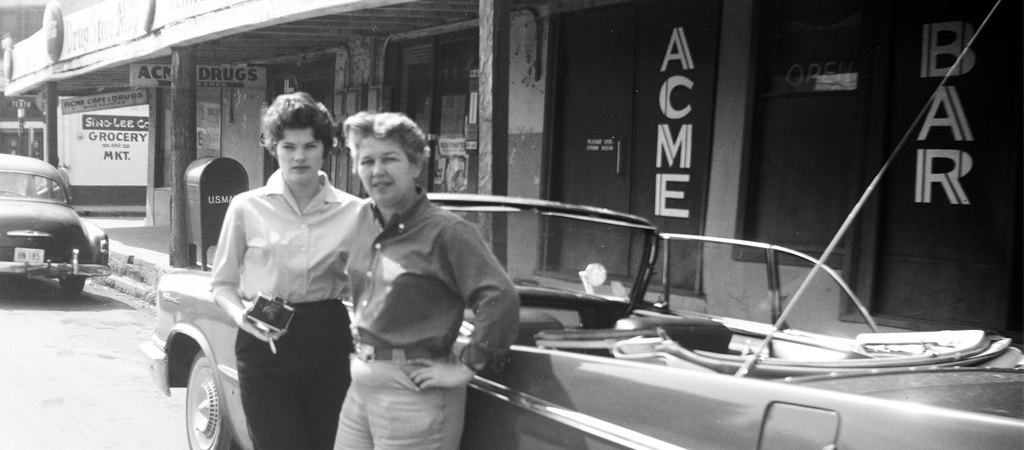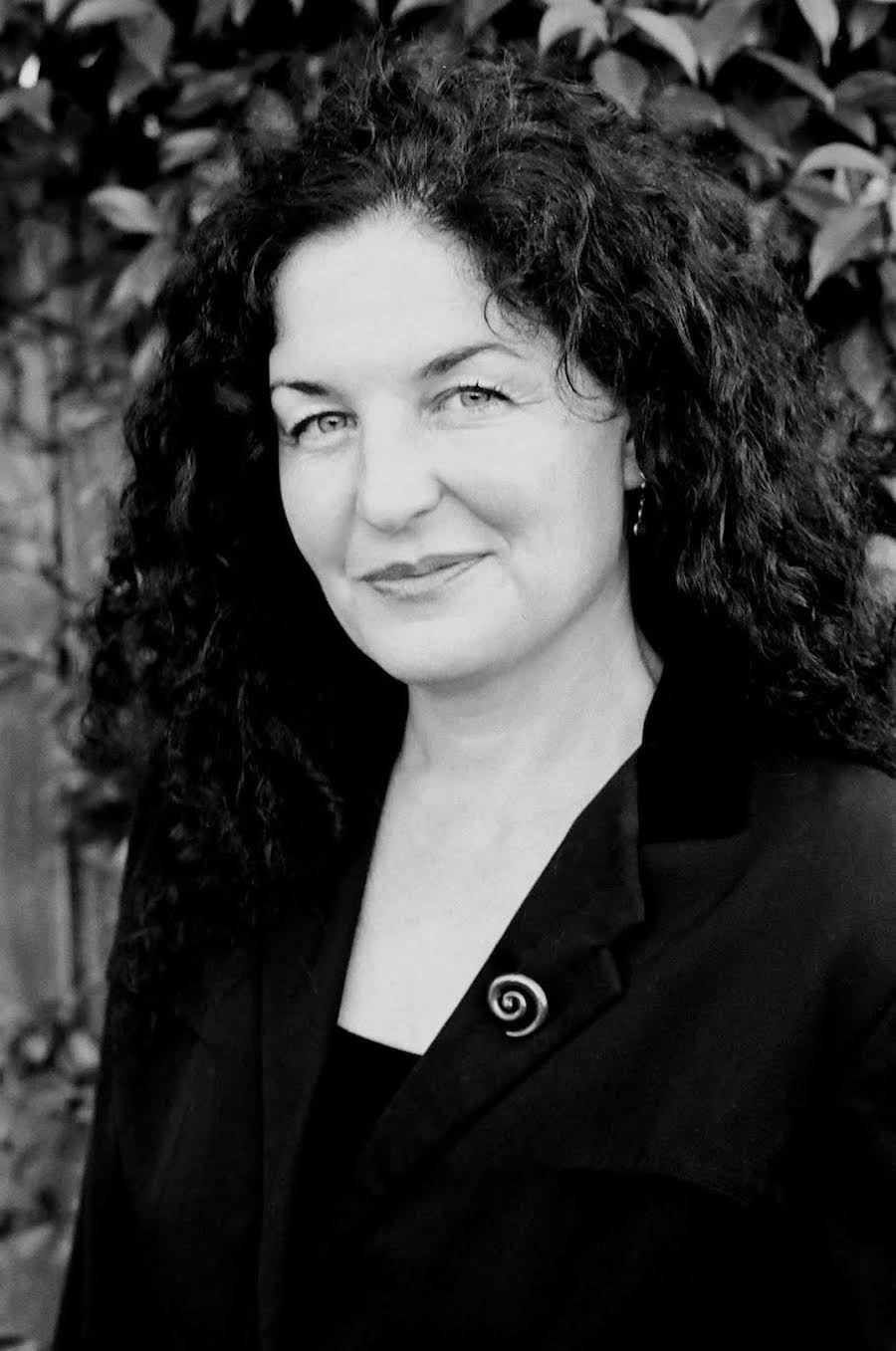
The Acme Bar in San Antonio, Texas.
Long before the LGBT community reaped the benefits of the Stonewall revolution, there was one place and one place only they could commune: the bar.
These small, almost invisible spaces were—whether one liked it or not—the only place to congregate, socialize, share moments, and be one’s self. And for Dr. Marie Cartier, the experiences were on the level of religious experiences: the bar became the church for the LGBT community pre-1968
Cartier—who has both her MFA and her PhD, the latter in Women’s Studies & Religion—and her thesis that the gay bar was the church of the LGBT community did not just magically appear to her. Her adventure in writing Baby, You Are My Religion: Women, Gay Bars, and Theology Before Stonewall spans personal experience, historical research, and countless interviews with lesbian and gender non-conformative women.
Having done a one-woman show “Ballistic Femme” in San Francisco’s LunaSea Theatre, she was approached by the lesbian lighting designer of the show and criticized Cartier on one thing: “You never go into the history of things.”
This point—to which Cartier laughingly retorts, “Lesbians, ya gotta love ‘em: you can’t do everything, y’know?”—lingered with her significantly. It lingered to such an extent that she did in fact do her history research, and discovered that the space of the gay bar was much like religious experience; there are rituals, a genuine feeling of loyalty, and was for many a common—if not daily— part of their life.
 “If we met at a gay bar pre-Stonewall, I wouldn’t know whether you were Baptist or Catholic or Jewish—but I would know you’re a sinner,” Cartier said. “It had a big import in your life because religious identity could not be dismissed. All of the spiritual, alternative religions we know of now—particularly in California, as part of everyday life—weren’t an option.”
“If we met at a gay bar pre-Stonewall, I wouldn’t know whether you were Baptist or Catholic or Jewish—but I would know you’re a sinner,” Cartier said. “It had a big import in your life because religious identity could not be dismissed. All of the spiritual, alternative religions we know of now—particularly in California, as part of everyday life—weren’t an option.”
In other words, the four walls of this contested space—the gay bar—acted as the conduit between identity and having a community for that identity. Or what many of the women Cartier interviewed called “the only place”: the only place to meet, socialize, and most importantly, be one’s self.
“The way people acted in bars was very much analogous to religious experiences—especially pre-Stonewall when people had a religious identity that was very different than the religious identity people were allowed to have when spirituality became part of the lexicon,” Cartier said.
The now common phrase that something, say surfing or writing, is someone’s “religion” was non-existent before Stonewall. Religion was the religion one was born into—period. There wasn’t a fluctuation between spirituality and religion, and the word “sinner” was one which wielded power.
Many of women Cartier interviewed—over a hundred—were gathered from the Center’s Women of 40Plus group, which has now moved to meet every Thursday at St. Gregory’s Episcopal Church to handle the increase in attendance. In fact, the book’s cover—taken outside a lesbian bar in San Antonio, Texas in 1961—features Carolyn Weathers, now a Long Beach resident.
When Cartier moved to Long Beach in 2004 to begin her doctoral dissertation, however, Women of 40Plus was smaller and more intimate.
“You can’t just walk into these places and get their stories, y’know?” Cartier said. “My first interview went really badly. No one really understood or knew what I was doing—hell, I didn’t even know what I was doing exactly either. A lotta the perspectives from these women were along the lines of: ‘That was a really bad time—why would you ever want to go back to it?’ But that lighting designer really put something in my head in ’97.”
For Cartier, there was a history there that had to be told—and one which could not be romanticized. The fact that there was no other space pre-Stonewall emphasizes that, like the women had expressed when approached by Cartier, it was not a safe time for LGBTers: they were considered mentally and physically ill by America’s doctors and considered sinners in every major and minor religion in the world.
 And to get to these bars was no simple task either: in the words of Cartier, the only two ways to access these bars were to have the audacity to ask a cab driver or follow a butch woman.
And to get to these bars was no simple task either: in the words of Cartier, the only two ways to access these bars were to have the audacity to ask a cab driver or follow a butch woman.
“The names [of LGBT folk] were even turned in at Alcoholics Anonymous meetings,” Cartier said. “You couldn’t even be safe at an AA meeting. The only place that you could be a known homosexual—even though you could get arrested there and it was not safe—was a gay bar.”
The advent of gay pride and the televised uprising of Stonewall eventually introduced other places—and perceptions—that the LGBT community could congregate. With the removal of homosexuality from the DSM manual of the American Psychiatric Association in 1973, the retreat of the Red Scare, and the academic discourse that included lesbian feminism and gay rights, spaces and places grew for LGBT identities beyond the bar.
This, however, doesn’t discount the history—even from those directly involved in it perceiving it as something which should be forgotten.
“We as gay people need to learn to be proud of the history we have and not searching for a history to be proud of,” Cartier said. “It is important for us to know our history. History does repeat itself for those who don’t know it and don’t hold it up. If we don’t look at this bar culture, at this time that was dangerous and unpleasant, we run into the danger of repeating it.”
In this sense, Cartier’s ultimate goal is to keep hope alive—she openly recognizes that we have many more steps to take if one is geared towards the idea of LGBT rights—and, in a particularly offbeat sense of the term, engage in her own form of activism through historical research.
“For some, the most radical activism is to just continue,” Cartier said. “To just make a friend. To just have community. Sometimes that is the harder activism—and I’ve done marching in the streets, I’ve engaged against police actions, I laid down in front of a nuclear power plant when I was 15… But it has been doing this work that daily resistance as activism isn’t the only activism. It’s also the person who has to get up and work three jobs to put her kids through school. It’s the people who went to those bars and kept a public face on a community.”
Cartier will be doing a reading and signing of her book, Baby, You’re My Religion: Women, Gay Bars, and Theology Before Stonewall, this Sunday, January 12 at 3PM. The event is free, open to the public, and will take place at The LGBTQ Center located at 2017 E. 4th Street.
Her book can also be purchased here through Amazon.
{FG_GEOMAP [33.7718367,-118.16710219999999] FG_GEOMAP}

